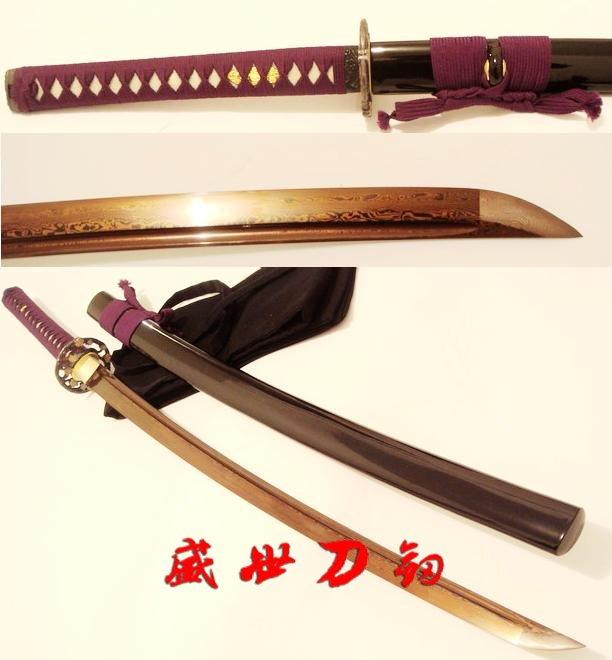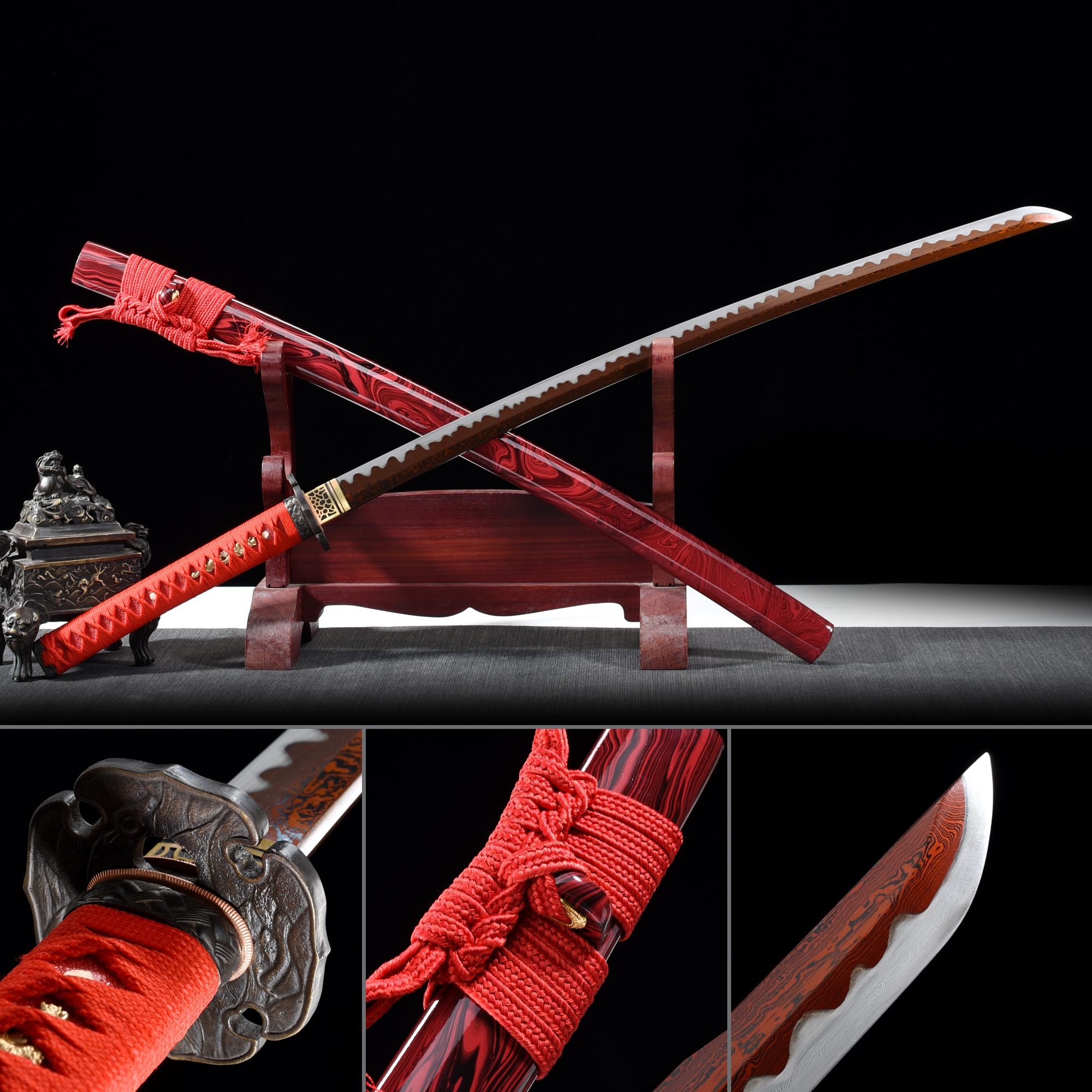

It is as important as the rest of the blade and reveals the Boshi. The polishing of this point can take a long time, as it is very important. This Hamon does not have a 100% success rate and this affects the price of high-end bladesīoshi :This part refers to the hardening line of the Hamon which extends to the tip (Kissaki) of the Katana. We coat part of the blade with a clay mixture that we will heat and temper, the part with the clay will cool much faster and will be more rigid and sharp. Hamon :The Hamon is the line of tempering that demarcates the most rigid and sharp part of the blade with the other, more flexible part. The flat section of the blade is therefore called Shinogi-Ji. The Shinogi is the part from the edge of the blade to the line that determines the flat of the blade. Shinoogi & Shinogi-Hi : These two Japanese terms are complementary. This curvature can vary according to the katana and has several names depending on the intensity of the curvature. Sori : The Sori measures the curvature of the blade. The Katana Sword is a fascinating work of art with a lot of different parts in its nomenclature, let us explain you easily most of the parts.

These also do a good quality check so that you are sure of a safe purchase.Welcome to Katana Sword, here are information about the Katana that you need to know ! These are, for example, the Hanwei Forge by Paul Chen and John Lee. As well as a high-quality handle with a high mounting quality.įor a functional handmade sword, it is therefore best to choose an experienced forge. A good hand forged high carbon steel blade with heat treatment is just as important.
#Full tang battle ready katana full
It must also be designed for functional use and that implies more than a full tang sword. So you have to see a term full tang in the entire design of the entire sword, then it has value. I will make that clear on the basis of a sword design.Īt A you see a full tang sword which is designed with a view to a functional sword.Īt B you see a full tang but this will still not give sufficient strength, then the design is not correct. A forge with enough experience that aims to make a functional sword will include this in its design and production. It should not be that the part of the blade is so thin that it still does not give much strength to the blade in the handle. And in the sword world this certainly includes "battle ready" and "full tang". Certainly on the internet sellers call everything without even realizing what a term means exactly. There are more aspects involved, you can only chop and cut with a full tang if the blade is made of a High Carbon Steel and has had a good heat treatment.Īnd as with everything else you can use the term full-tang sword inappropriately, sometimes you can also use this term in a somewhat nuanced way. You can't go completely blind about whether or not a sword is full tang. If you were to use a sword that is not full tang, but with half a tang for example, the balance of such a sword is also dramatic. The consequences of this cannot be foreseen and are therefore extremely dangerous. Because if it does not consist of one part, then the chance is very, but also very large that if something is hit, the sword breaks in two.

So the tang in the handle may not be welded, glued or screwed to the blade. So what's under or actually in the handle is the same piece of steel as the blade or blade you see. This applies to both Japanese katanas, Chinese swords and European swords.Ī full tang means that the sword is forged from one piece of steel and that it is properly and tightly secured in the handle. The tang is completely in the handle, that is the meaning of a full-tang sword. In essence, with a full tang sword, this is the part of the blade that you hold in your hand and the entire handle is built around it. The part of the blade under the handle, which you also call Nakago (with a Japanese samurai sword) or angel. Under the handle is a part of the blade with a sword, you don't see this immediately. You can easily hang it on the wall, but do not remove it for use. It does not really matter for a wallhanger or decorative sword. Or you should not care about quality and safety.

If a sword is not full tang, you should better not purchase it.


 0 kommentar(er)
0 kommentar(er)
